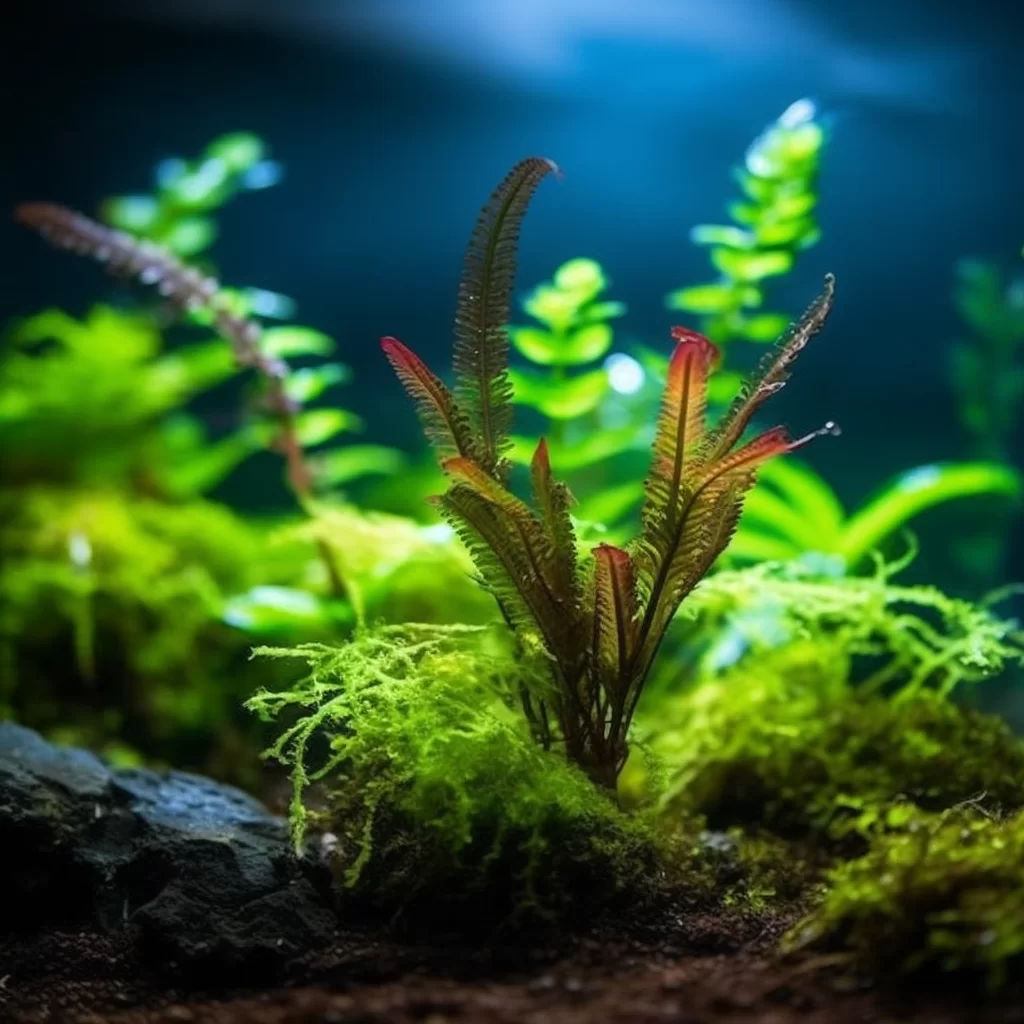Story of Day :
Contents
The Aponogeton Aquarium Plant: Complete Guide and Care Tips
Gardening is not just about planting in soil.
Aquatic plants can also be a great addition to any garden, especially for those who love aquariums.
One such plant that stands out is the Aponogeton Aquarium Plant.
This beautiful aquatic plant provides an excellent aesthetic appeal to any aquarium, but it requires certain care tips and conditions to thrive.
Introduction to the Aponogeton Aquarium Plant
The Aponogeton Aquarium Plant belongs to the family of water hawthorns and originates from Madagascar.
It’s a popular choice among aquarists because of its unique leaf structure and flowering abilities under suitable conditions.
The leaves of this plant are relatively broad, while their colors vary from bright green to brownish-green with slightly reddish edges.
The foliage might grow up to 12 inches long or more, depending on specific varieties.

Care Tips for the Aponogeton Aquarium Plant
If you’re considering adding this aquatic plant variety to your aquarium garden, here are some essential care tips:
- Aquarium Size: One crucial factor when growing this type of aquatic plant is making sure you have a large enough aquarium tank that accommodates its growth requirements comfortably.
You need at least 20-gallon fish tanks if you want your plants’ roots sufficient room for growth without over-crowding other fish species living in them.
- Lights and Temperature: Another critical factor when caring for your Aponogetons is providing them with adequate lighting conditions between eight to ten hours per day using LED lights or fluorescent bulbs suitable for planted aquariums since they require sunlight equivalent to natural light conditions.
The ideal water temperature range for this plant should be between 72 degrees Fahrenheit and 78 degrees Fahrenheit.
- Water Quality: Water quality is also crucial to the growth of your Aponogeton aquarium plants.
You should maintain a good filtration system to keep the water clean, and regular partial water changes are essential in keeping nitrate levels low since high levels can harm your plants.
- Substrate: With their bulbous roots, Aponogeton Aquarium Plants will need suitable substrates such as nutrient-rich gravel or sand where they can anchor themselves firmly while still providing them with adequate nutrients, so they grow healthy and robustly.
Aponogeton Aquarium Plant Propagation Techniques

Growing new Aponogetons from existing ones is relatively easy since these aquarium plants propagate by producing seeds that drop off into the substrate or by sending out runners that result in new bulb formations.
The easiest way to propagate this plant is by separating its daughter bulbs when they become visible on the mother plant’s base.
- Bulb Separation: To perform bulb separation successfully, you only need a pair of scissors.
Cut them at their base near the mother bulb with precision without damaging either one.
Make sure you remove any damaged leaves or dead foliage before planting these separated bulbs into fresh substrate gently.
- Sowing Seeds: You can also sow Aponogeton seeds directly into your aquarium substrate using a pipette for more precise placement than scattering them randomly over available spaces once they fall off from mature flowers towards maturity stages like late summer or autumn seasons
.
Avoiding Common Mistakes When Caring for your Aponogeton Aquarium Plant
Even with the best care techniques, aquarium gardeners may make some mistakes that can affect their Aponogeton’s growth.
Here are some common mistakes to avoid:

- Overfeeding: When you overfeed your fish, uneaten food particles will eventually sink to the bottom of your tank and break down into harmful nitrate levels that can harm aquatic plants’ growth.
- Algae Overgrowth: Aponogetons grow best in clean environments where there is not too much algae growth.
Algae may compete for nutrients and light with these aquatic plants, causing stunted growth or even death when left unchecked.
- Inadequate Substrate: If you do not provide adequate substrate for your Aponogetons, they will struggle to root themselves firmly enough in place to grow well.
It would help if you chose a high-quality substrate specially formulated for planted aquariums.
In Summary
The Aponogeton Aquarium Plant is a popular choice among aquarists because of its unique leaf structure and flowering abilities under suitable conditions.
To ensure its healthy growth, it requires proper lighting conditions between eight to ten hours per day using LED lights or fluorescent bulbs suitable for planted aquariums since they require sunlight equivalent to natural light conditions; maintaining water quality by having a good filtration system and regular partial water changes; providing nutrient-rich substrates such as gravel or sand where they can anchor themselves firmly while still providing them with adequate nutrients so they grow healthy and robustly; avoiding common mistakes like overfeeding fish or letting algae take over the tank ecosystem which competes too much with these plants’ resources leading ultimately reduced vitality levels amongst other factors affecting Aponogeton growth.
By following these care tips, you’ll have a thriving aquarium plant garden that brings beauty and joy to your home.
